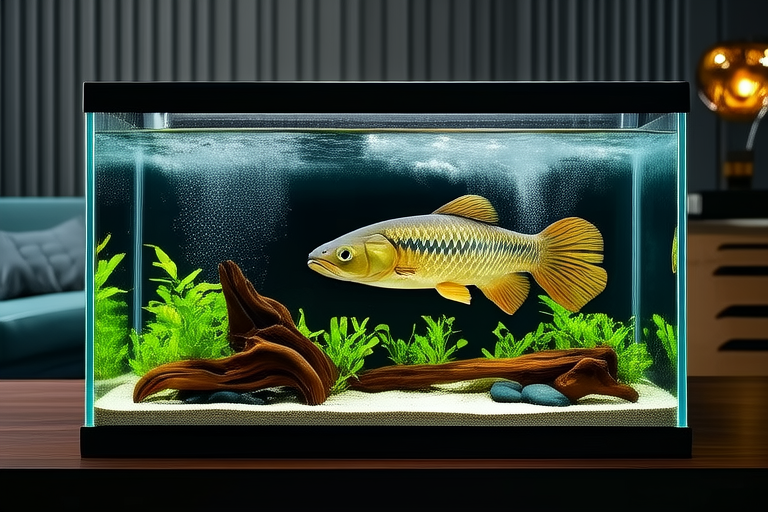
Setting Up Ideal Aquariums for Arowana Pets
Arowana Fish: A Unique and Exotic Pet
Arowana fish are among the most exotic and unique freshwater species available to hobbyists. Known for their striking appearance and remarkable jumping abilities, these fish have captured the hearts of many aquarists worldwide. Their metallic scales and elongated bodies make them stand out, while their intelligence and interaction with humans add to their charm. However, caring for Arowana requires more than just a standard aquarium setup; it demands an understanding of their specific needs to ensure they thrive in captivity.
Essential Factors for Creating an Ideal Habitat
Creating a habitat for Arowana involves several critical factors that directly influence their health and well-being.
Tank Size
Arowanas are large, active fish that require ample space to swim freely. The minimum recommended tank size for a single Arowana is 400 liters, but larger tanks are preferable, especially if you plan to keep multiple fish or provide additional room for swimming. For each additional Arowana, an extra 200 liters of water is advisable. The tank should be at least 1.8 meters long, providing enough length for the fish to move back and forth comfortably.
Water Parameters
Water quality is crucial for Arowana’s health. The temperature should be maintained between 24°C and 28°C, replicating their native tropical waters. pH levels should range from 6.5 to 7.5, slightly acidic to neutral. Regular monitoring of these parameters ensures a stable environment, preventing stress and disease.
Filtration Systems
A powerful filtration system is necessary to maintain clean and healthy water. Filters should efficiently remove waste, debris, and excess nutrients, preventing ammonia and nitrite spikes. Considerations include biological, mechanical, and chemical filtration. Biological filters support beneficial bacteria, breaking down harmful compounds. Mechanical filtration traps debris, and chemical filtration helps control odors and unwanted chemicals.
Lighting
Proper lighting enhances the aesthetic appeal of your aquarium while promoting the growth of live plants. Use full-spectrum LED lights that simulate natural sunlight, offering both cool and warm white tones. Ensure lights provide about 8-10 hours of light daily, mimicking the day-night cycle.
Suitable Decorations and Plants
Incorporating elements that resemble their natural habitat can help Arowanas feel more comfortable. However, care must be taken to avoid decorations that may pose a threat to their safety.
Decorations
Smooth rocks and driftwood can create hiding spots and resting areas. Avoid sharp or rough objects that might injure the fish. Ensure any decor is thoroughly cleaned before introducing it to the tank to prevent the spread of diseases.
Plants
Live plants not only beautify the tank but also contribute to oxygen production and natural filtration. Choose robust varieties like Java fern, Anubias, and Amazon swords. These plants are resilient and can withstand the energetic movements of Arowana. Floating plants such as water lettuce and duckweed can also be added, providing shade and reducing algae growth.
Proper Feeding Habits and Nutrition
Maintaining the health of your Arowana requires attention to their diet. A balanced and varied diet supports their growth and overall well-being.
Dietary Requirements
Arowanas are carnivorous and require a protein-rich diet. Feed them high-quality pellets, frozen or live foods like earthworms, bloodworms, and small fish. Variety in their diet ensures they receive all necessary nutrients. Feed them once or twice daily, providing as much food as they can consume within 5 minutes.
Nutritional Balance
Supplement their diet with vitamins and minerals to prevent deficiencies. Commercial supplements are available, but consult with a veterinarian or experienced aquarist for recommendations tailored to your fish’s specific needs.
Tips for Regular Maintenance and Common Challenges
Regular maintenance is key to keeping your Arowana healthy and happy.
Maintenance Tips
Perform partial water changes weekly, removing approximately 20% of the water and replacing it with fresh, dechlorinated water. Clean filters and decorations regularly to prevent the buildup of waste and debris. Monitor water parameters closely and adjust as needed to maintain optimal conditions.
Common Challenges
Despite careful preparation, challenges may arise. Arowanas are prone to stress, which can lead to health issues. Signs of stress include reduced appetite, lethargy, and abnormal behavior. Address potential stressors promptly by improving water quality, providing more hiding spaces, or adjusting lighting. Parasites and bacterial infections are also common, requiring prompt treatment with appropriate medications.
Conclusion
Setting up an ideal aquarium for Arowana fish requires attention to detail and commitment to their specific needs. By understanding and addressing the essential factors of tank size, water parameters, filtration systems, lighting, and proper feeding, you can create a thriving environment for your Arowana. With regular maintenance and vigilance, you can enjoy the beauty and companionship of these magnificent creatures for years to come.




